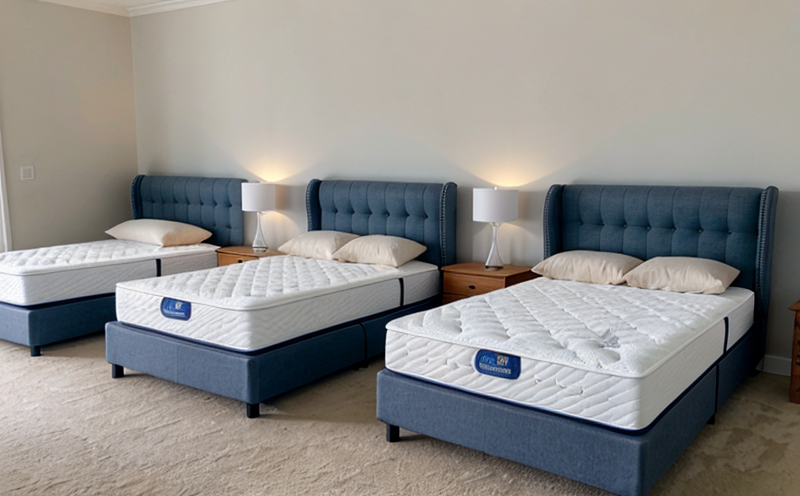ISO 16000-6 VOC Emission Testing of Bed Foam and Coverings
In the realm of furniture testing, particularly within the category of beds & mattresses, ensuring that products meet stringent environmental standards is crucial. The ISO 16000-6 standard provides a robust framework for measuring volatile organic compound (VOC) emissions from bed foam and coverings. This test is vital because VOCs can contribute to poor indoor air quality, which in turn can lead to health issues such as respiratory problems.
The ISO 16000-6 standard specifies the procedures for determining the volatile organic compound (VOC) emissions from bed foam and coverings under controlled conditions. It is widely recognized for its reliability and consistency across various testing environments, making it a cornerstone in the quality assurance of furniture products.
For R&D engineers and quality managers, this test offers critical insights into the potential environmental impact of their products. By adhering to ISO 16000-6 standards, manufacturers can ensure that they are meeting regulatory requirements and enhancing the overall health and safety of consumers.
The testing process involves several steps: first, the specimen must be prepared according to specific guidelines provided by the standard. This typically includes cutting the foam or covering into a standardized size for accurate measurement. Next, the sample is placed in a controlled environment where it emits VOCs under specified conditions. The emitted gases are then analyzed using gas chromatography-mass spectrometry (GC-MS) or similar instrumentation to quantify the VOC emissions.
The results of this testing provide valuable data that can inform product design and development decisions, ensuring that the final products meet not only regulatory requirements but also exceed customer expectations in terms of environmental friendliness. This test is particularly important for beds & mattresses as it directly impacts the quality of indoor air, which is a critical factor in maintaining a healthy living environment.
Furthermore, compliance with ISO 16000-6 standards can open up new markets and customer segments that value sustainable and environmentally friendly products. This testing can also help identify potential issues early in the product lifecycle, allowing for timely adjustments to formulations or manufacturing processes.
The importance of VOC emissions testing cannot be overstated, especially as consumer awareness regarding indoor air quality continues to grow. By conducting this test, manufacturers can demonstrate their commitment to producing high-quality products that are safe and sustainable. This not only enhances brand reputation but also fosters long-term customer loyalty.
Why It Matters
- Health Impact: Exposure to VOCs can lead to various health issues, including respiratory problems and other adverse effects. Ensuring that bed foam and coverings meet stringent emission standards is crucial for maintaining a healthy indoor environment.
- Regulatory Compliance: Many regions have strict regulations regarding the allowable levels of VOC emissions from consumer products. Adhering to these standards through ISO 16000-6 testing can help avoid costly legal issues and penalties.
Scope and Methodology
The scope of ISO 16000-6 VOC emission testing covers the measurement of volatile organic compounds from bed foam and coverings. The methodology involves placing a standardized sample in a controlled environment where it is exposed to specific conditions that allow for the release of VOCs. These emissions are then collected and analyzed using advanced instrumentation.
The test setup typically includes a climate chamber that maintains precise temperature, humidity, and airflow conditions. The sample is placed inside this chamber, where it emits VOCs over a set period. After the emission process, the gases are captured and measured to determine the concentration of different VOC species present in the air.
The results from this testing provide detailed information about the types and quantities of VOCs emitted by the sample. This data is then used to assess compliance with relevant standards and guidelines, ensuring that the product meets or exceeds the required emission limits.
Why Choose This Test
- Regulatory Compliance: Ensuring adherence to international standards helps avoid legal issues and penalties associated with non-compliance.
- Consumer Trust: Demonstrating a commitment to environmental responsibility can significantly enhance brand reputation and customer trust.





